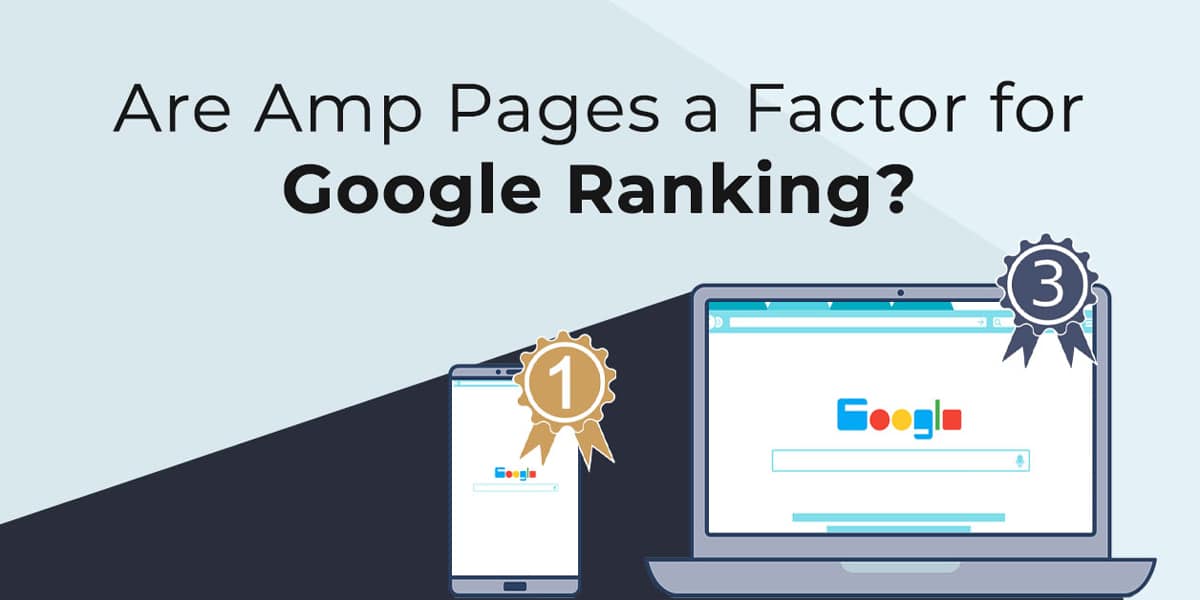Are AMP Pages A Factor For Google Ranking?
Google developed Accelerated Mobile Pages (AMP) to quicken website loading times on mobile devices. This evolution is incredibly important to site owners and consumers, as it drastically changes the way people use their smartphones.
Of course, you want to know the statistics of mobile users versus desktop users. This includes their purchases on both available devices. We will discuss all the ins and outs of AMP pages in this article. So, right now you want to know: are they a factor for Google Ranking?
Within the ever-changing Google ranking algorithms, one thing stays the same: pages that load faster, rank better. The page speed is infinitely faster and therefore the ranking is substantially higher. This is all as are result of updating a site as an AMP page.
AMP pages were supposed to be the future of mobile and maybe even desktop devices, and we don’t even have to wait for technology to catch up with what users and business owners want, it’s happening right now.
There are contradictory opinions from experts on this matter. Whether or not AMP pages have lived up to the hype, they are still important to Google. Keep reading if you want to learn a little more about AMP and why Google cares about them.
Why Were AMP Pages Created?
It all began in 2016 when Google got together and created the framework for all online businesses. The framework to have the opportunity to convert their sites into AMP pages on an open-source platform.
There was a real need for a new system to accelerate page speed on mobile devices. Every day there are 30 billion times when a mobile user attempts to open a site page. Take note that they load so slowly that consumers leave the page before it even opens.
Statistically, almost half (40%) of all users will exit a website if it takes longer than 3 seconds to load. However, most mobile sites take at least 6.9 seconds before they fully load, so you can see the problem there.
The majority of users won’t click on an ad again if it took too long to load the first time. Once again, demoting the site’s ranking and, of course, user engagement.
AMP pages were supposed to be the answer to this immense problem. However, as we will learn, they haven’t become quite as popular as everyone expected.
How Do AMP Pages Work?
You know what AMP pages can do for your site, but how do they really work?
It essentially simplifies the HTML, automatically guaranteeing a faster page speed. This is when creating an AMP page for a more mobile-friendly website.
It also removes or clarifies the site’s more complex coding, including photos, fonts, and Javascript. Often, ads are also removed to quicken the speed, which can be a detriment to many companies.
Google also caches the site’s information so that it is ready to load as soon as a user engages.
Some web designers found these simplifications too limiting, and instead choose to work more diligently to speed up their websites without using the AMP platform.
This can absolutely work and with the right coding, you can get your site to load within 2 seconds without AMP, it just takes a little more work.
What Is Happening with AMP Pages Today?
Some experts report that AMP pages haven’t become the fix-all solution that people were hoping for in regards to encouraging mobile-friendly websites (whether for purchases or for traffic.)
Even though over 4 million AMP pages have been published, the page speed has increased to less than half a second, and the display is easily readable and interactive, Google has more or less stopped promoting AMP pages with specific icons (such as the AMP anagram or a lightning bolt.)
Although you can still transfer your website into an AMP page, and millions of more sites are being converted every year, they’re not talked about nearly as much as they once were.
Why Are AMP Pages a Factor for Google Ranking?
You might think that the AMP craze is over, but having one of these pages still helps your site within the Google algorithm, and therefore, its ranking.
Google claims that using the open-source platform to create an AMP page does not directly benefit your rating, but that’s not entirely true.
As speed and user-friendly layouts are always factors in the Google algorithms, of course, an AMP page will do better than a regular site.
Why Does Google Love AMP Pages?
One reason that AMP pages have such a quick page speed is that the information is cached on Google and therefore is already ready to load.
This benefits Google as they now have access to billions of pages that they can provide to their users in a fraction of the time.
In this way, they can now compete with Facebook Articles and Apple News in producing immediate connections for users, ensuring consumers continue to use Google for their searches, instead of the many other available platforms.
What You Need To Know
Going forward, no one is really sure what is going to happen to AMP pages. They may remain an available option to enable your site to be more mobile-friendly by increasing your page speed and therefore keep your site high on the Google rating, but we really don’t know.
Technology is ever-changing, growing, and adapting, sometimes at an astonishing rate. By the end of 2021 AMP pages could be replaced by an entirely new system.
However, for now, Google is still offering the option, and hopefully, you now understand a little more about the framework, how it could benefit your site, and why it is a factor for Google ranking.
No To The Quo is your virtual marketing department and we can help you with everything from web design and SEO to email marketing and social media management. Please contact us for more information.
SEO Web Design No To The Quo



